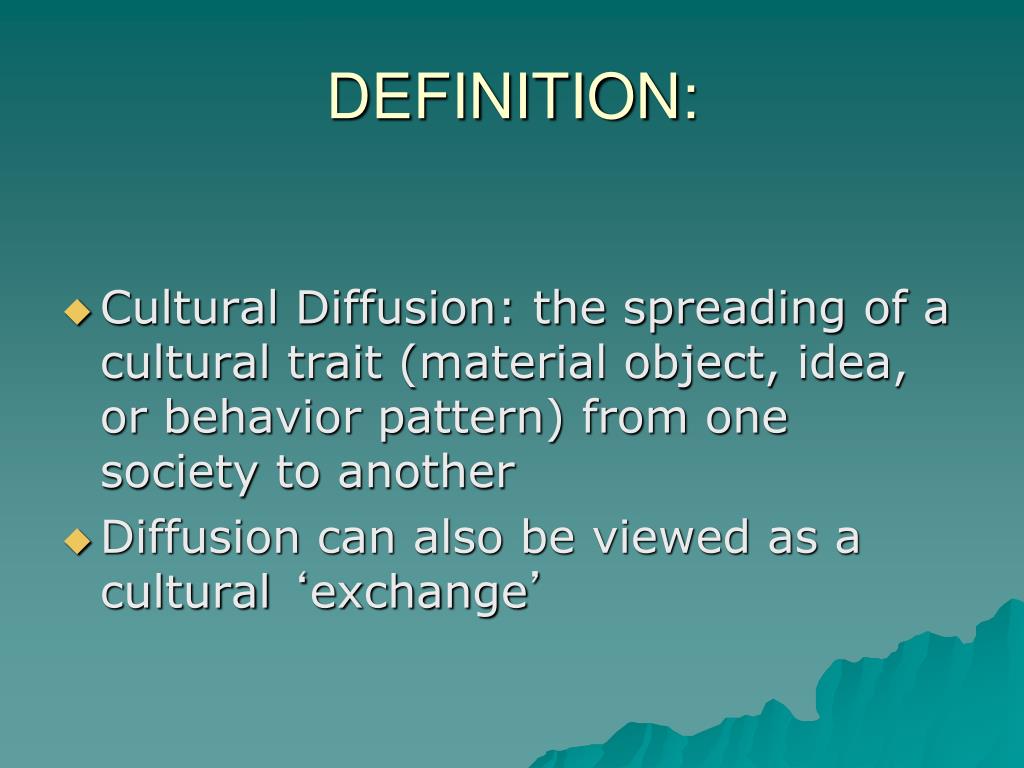Have you ever wondered how certain cultural practices, like the use of smartphones or the popularity of certain music genres, spread across the globe? Or how societal norms and values evolve and change over time? The answer lies in the fascinating realm of diffusionism, a theoretical framework in sociology that studies the spread of cultural elements from one group or society to another.

Image: www.hindkanapakkojawab.com
Diffusionism is a crucial lens through which sociologists understand how societies change and adapt. It examines the mechanisms by which ideas, practices, technologies, and even social movements cross borders and take root in new contexts. By exploring the dynamics of cultural diffusion, we gain a deeper understanding of how societies evolve, interact, and sometimes even clash.
The Roots of Diffusionism: A Historical Perspective
Early Theories and Controversies
The concept of diffusionism emerged in the late 19th and early 20th centuries, inspired by the growing field of anthropology and the discovery of similarities between cultures despite their geographical distance. Early diffusionists, like the prominent German anthropologist, Friedrich Ratzel, believed that all cultural traits originated in a single “culture hearth” and spread outwards. This theory sparked debate and controversy, as some scholars criticized it for neglecting the potential for independent innovation and internal cultural development.
Diffusionism in the 20th Century
In the 20th century, diffusionism evolved, becoming more nuanced and embracing the complexities of cultural exchange. Leading figures like Franz Boas, a prominent American anthropologist, argued for a multi-linear approach, acknowledging the possibility of multiple cultural hearths and independent invention. However, they still emphasized the importance of diffusion as a significant force in cultural change.

Image: 8tracks.com
Diffusionism Today: A Modern Perspective
In contemporary sociology, diffusionism remains a valuable theoretical framework for understanding cultural change, but with a more nuanced and dynamic perspective. Modern diffusionists recognize that cultural exchange is not a one-way street. It involves reciprocal processes where ideas and practices are exchanged, adapted, and reinterpreted in their new contexts. This understanding avoids the pitfalls of earlier theories that focused solely on the transmission of cultural elements from one dominant source.
The Mechanisms of Diffusion: How Cultural Elements Spread
Direct Contact
One of the most straightforward mechanisms of diffusion is through direct contact between individuals or groups. This can happen through trade, migration, conquest, or even tourism. For instance, the spread of food and culinary practices across continents is often attributed to trade routes and migration patterns. The introduction of Indian curry dishes to the British Isles during the colonial era serves as a classic example.
Stimulus Diffusion
Sometimes, the spread of ideas and practices doesn’t involve the direct transfer of the element itself but rather the inspiration it provides. This is known as stimulus diffusion. For example, the introduction of the automobile in Europe sparked a wave of innovation and development in other countries, leading to the creation of different car models and manufacturing processes, even though the original design may have come from a specific source.
Relocation Diffusion
Relocation diffusion occurs when individuals or groups carry their cultural practices with them as they migrate to new locations. This can play a crucial role in the spread of languages, religions, and even food traditions. The migration of various ethnic groups to the United States throughout history has led to a rich tapestry of cultural diversity, with different groups bringing their unique traditions and practices to their new homeland.
Hierarchical Diffusion
Hierarchical diffusion involves the spread of cultural elements from larger, more influential centers to smaller, less influential areas. This can be seen in the adoption of new technologies, fashion trends, or even political movements. The spread of the internet and social media platforms, driven by innovation in developed countries, offers a clear example of hierarchical diffusion.
Examples of Diffusionism in Action
The Spread of Globalization
Globalization, with its interconnectedness of markets, cultures, and technologies, is a prime example of diffusionism in action. The global flow of goods, services, and information has led to the spread of ideas, practices, and cultural trends across borders, blurring traditional geographical boundaries and creating a more interconnected world.
The Diffusion of Fashion Trends
Fashion trends often originate in specific fashion capitals, like Paris or Milan, and then spread to other regions. The adoption of trends, from the latest designer handbags to the popularity of specific clothing styles, demonstrates the power of diffusion in shaping consumer culture.
The Diffusion of Social Movements
Social movements, like the Arab Spring or the Occupy Wall Street movement, often rely on diffusion to gain momentum and spread their message. The use of social media and digital platforms has enabled the rapid spread of ideas, galvanizing support and inspiring individuals in different parts of the world to join the movement.
Diffusionism: Challenges and Criticisms
While diffusionism provides valuable insights into cultural change, it’s not without its challenges and criticisms. Critics argue that it can overemphasize the role of diffusion at the expense of independent invention and internal cultural development. Some also argue that the model can be overly simplistic, failing to capture the complexity of cultural interactions and the role of agency in shaping societal change.
Moving Forward: Beyond Diffusionism
Despite its limitations, diffusionism remains a crucial theoretical perspective for understanding cultural change. By recognizing its strengths and weaknesses, sociologists can use it to inform their research and analysis, always keeping in mind the complex and dynamic nature of cultural interactions.
Diffusionism In Sociology
Conclusion
Diffusionism offers a fascinating window into how ideas, practices, and technologies spread across societies, shaping our cultures and creating a world interconnected through the exchange of knowledge and experiences. By understanding the mechanisms of diffusion and its impact on different levels of society, we gain a deeper appreciation for the complexities of cultural change and the interconnectedness of our world.





